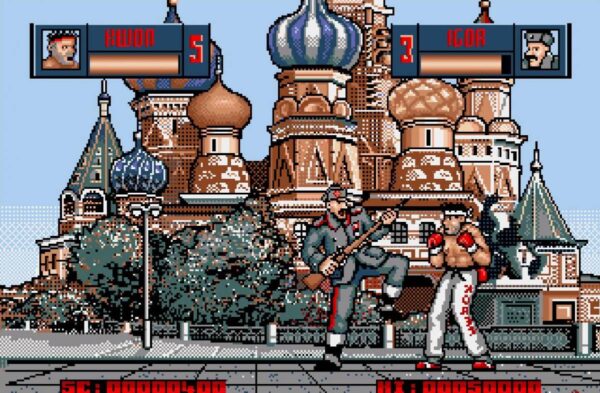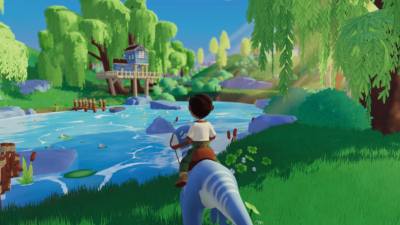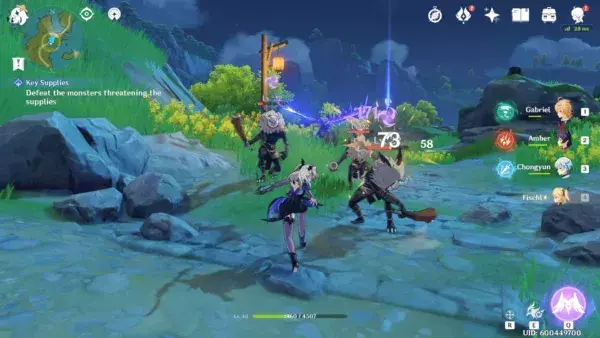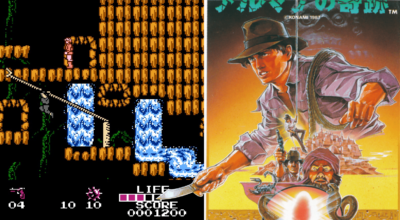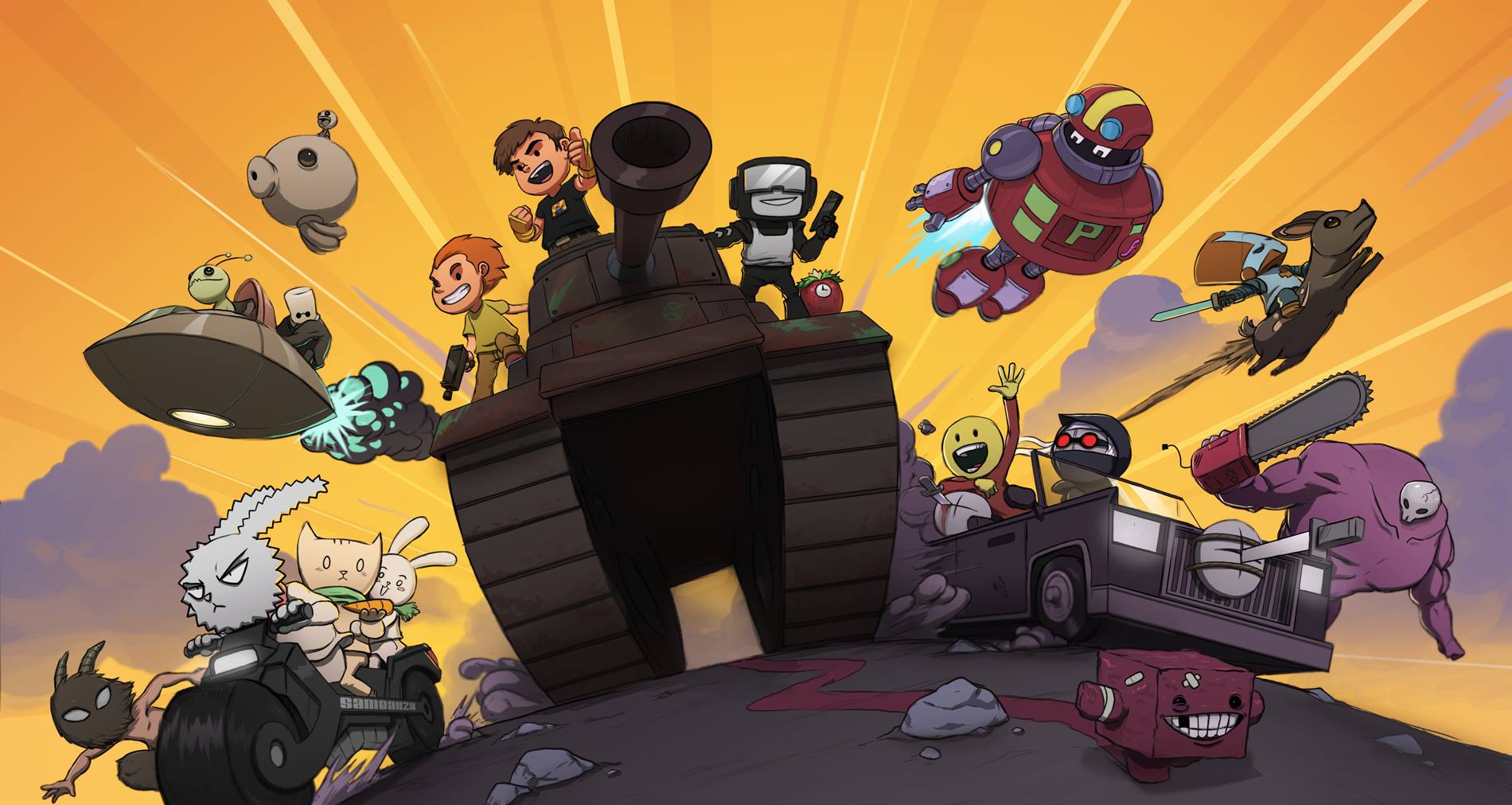
The humble Flash game is a term that can mean different things depending on who you ask. It can mean a long slog of frustration through games like QWOP or The Impossible Quiz. It can mean surprisingly strong browser-based MMOs like AdventureQuest. Or it can mean the incubator of whole genres, like escape the room, tower defence, and plenty of idle games. Throughout the 2000s, a huge swathe of gamers, many of them goofing off at work, became familiar with the easily identifiable vector graphics, smooth keyframe animations, and quick-fire mechanics of Flash games.
Whatever its proud history, though, Flash has had a difficult few years. The decline began in 2010, when it was pulled from iOS over concerns about battery life and difficulties running on mobile devices. The rise of HTML5, capable of building and displaying web apps and games in a more lightweight, secure, and easily integrated way on modern browsers, has had a big impact. And so too has the rise of mobile games, capable of offering quick, colourful experiences to the procrastination-prone.
The End Is Nigh
In 2017, Adobe announced that it will be pulling support for Flash as a platform at the end of 2020, with no more maintenance, updates, or patches to come. After two decades, it will be the end of an era.
All this leaves the tens of thousands of Flash games in a difficult place. These were games never distributed in any physical medium, and the amateur nature of their development means many will be cut adrift. Fans are trying, though. BlueMaxima, real name Ben Latimore, an Australian gamer and content creator, has set up Flashpoint, a preservation project which aims to archive titles from the golden age of browser gaming.

Super Meat Boy’s prototype, missing the prefix and simply titled Meat Boy, was originally developed in Flash.
Other deprecated formats, like Silverlight and Unity Web Player, are also covered, but this is a Flash-led affair. In just over a year, BlueMaxima and the team of volunteers have saved over 11,000 games. The truly hardcore can grab them all in one terrifyingly large zip file, but there is a smaller version containing just the front-end – think of a cut-down version of the Steam store – where individual games can be picked up at will.
BlueMaxima can’t do it alone, though, and there’s a Discord of contributors strip-mining the web for files. “I call it the ‘assembly line’ approach,” Latimore says. “We have a version of Flashpoint with next to no games in it called Core that we ask people to test their games in. Once they have a zip with logo, screenshot, meta, and game, they send it to [the] submissions channels on our Discord. I have a coded tool that lets me take those zips and add them straight into the Flashpoint database.”
Working with Creators
Responses from developers to Flashpoint have been mixed, with some out of contact altogether, given how long ago their games were made, and most not consulted about their work being archived. “We don’t ask for permission,” Latimore explains, “There’s a reason for that; most Flash developers are off doing other things at this point. Some are in completely different jobs. If we had to wait around for permission, nothing would ever get done, and with the games in danger of disappearing, it was better to act now and ask for forgiveness later.
“We’ve had lots of developers come into the Discord to say they support what we’re doing (which I’ve been taking as ‘You have permission to archive our stuff’). In fact, Tony, the guy who developed SHIFT [and] IndestructoTank, told me that he used Flashpoint to help him make the video on his résumé, on his website.”

The cartoony style forced by Flash’s vector-based graphics is used to great effect in rogue-lite The Binding of Isaac.
Where Latimore hasn’t had so much luck is with the bigger Flash game portals, where many of the more popular games still live for now. “I’ve tried to contact people at the head of sites like Armor Games and Kongregate,” he says. “I’ve been told anything from ‘It’s a license rights issue so we can’t legally help you’ to ‘I might be able to help you when the issue is more pressing’ to total silence.”
Armor Games’ VP of Business Development, John Cooney, is himself a former Flash developer, having created dozens of games including the popular Achievement Unlocked series and Hedgehog Launch. “We’re currently investigating ways we can preserve our top content,” he says. “Porting content to HTML5 is possible, but many of these games are over a decade old, so it’s not always technically simple.
“The preservation effort is larger than Armor Games, not just for the technical hurdles but for the way we need to do it,” he continues. “Flash developers are so important to modern gaming. So many Flash games innovated in their genres and still resonate in them today. Flash developers set the foundation for the modern indie scene and what it means to be indie. What they brought to gaming was wonderful, diverse, and special. We owe it to these developers to preserve their content in the way they want it to be preserved, to respect and acknowledge the incredible work they have done.”

John Cooney’s Achievement Unlocked series showcased a creative meta-humour in its approach to achievements and failure states.
The Legacy of Flash
While the technology might be going away, the legacy of Flash in amateur-developed, often quick-fire games can still be found in the industry, first in the indie boom of the late 2000s, and most recently in the enormous mobile game market. The energy of the small-time or solo developer is mostly found in those spaces, but Latimore worries that a breakthrough is harder now than it ever was in the hey-day of Flash.
“Clearly there’s going to be someone still motivated in the same ways,” he explains. “The problem is you have to dig through a whole lot more to find it. Mobiles have been utterly overtaken by major companies putting out soulless wallet-drainers for profit. The PC market is struggling under mounds of shovelware on Steam and bad discoverability on pretty much every other platform. HTML5 does exist as a game publishing platform, but it isn’t anywhere near as popular as Flash used to be, and people still say that it doesn’t go toe-to-toe with Flash’s capabilities to this day.

It isn’t much to look at now, but AdventureQuest managed a surprisingly complex in-browser MMO experience.
“Flash had a ton going for it that the rest of the industry doesn’t have,” he continues. “An extremely low barrier of entry to play with almost universal coverage, a low development hurdle, really high capabilities for its time… combine that with legitimately good games being able to rise to the top of Flash portals thanks to their quality, and you have a healthy market.”
Despite – or perhaps because of – the gargantuan preservation effort he’s making with Flashpoint, Latimore seems pessimistic about the format’s legacy in public opinion. “Flash’s legacy is probably going to be written by the victors, in this case being the mobile market,” he says. “Heck, everyone knows Angry Birds, but how many people know Crush the Castle, which has been cited as a direct influence, by comparison? If you ask about Flash games on a modern forum, you have a 50-50 chance of getting a ‘that was the best’ or ‘that was the worst’ response, and there is definitely a kind of negative vibe around Flash games that’s been around for years. I remember back in the late 2000s when certain games were described as ‘Flash games’ in a negative way. That’s one of the main reasons that Flashpoint exists, you could argue – to at least try and reverse that view.”

The Behemoth’s Alien Hominid was the first to make the jump from Flash to consoles – their multiplayer-focused arcade-style games are still popular today.
Breaking into the Mainstream
Whatever the popular memory of Flash as a format, it’s served as a great jumping-off point for many developers. Edmund McMillen found fame with Super Meat Boy, originally prototyped on Newgrounds as simply Meat Boy – his later hit, The Binding of Isaac, was also developed in Flash before its remake, subtitled Rebirth, eventually found its way to ten different systems.
The Behemoth’s Alien Hominid made headlines in 2004 when it found itself the first Flash game to be ported to PS2 and GameCube. Since then, the developer has produced perennially popular arcade-style titles such as Castle Crashers, BattleBlock Theater, and Pit People, still maintaining the cartoon style reminiscent of Flash’s distinctive look. The lower-budget end of the indie scene still sees these simple graphics and innovative mechanics occurring in the phenomenon of game jams, where developers work to create new games against the clock.

Building on the legacy of point-and-click adventure games, the ‘escape the room’ genre was born on Flash.
“While a lot of creative energy is pouring into Steam/PC and console,” Cooney says, “I still see hints and sparks of the original Flash dev scene in the jam communities. When Flash games were at their peak, it was viable to step away from a day job and work full-time on small, single-serving Flash games. While that’s less viable today, we do see more of a jam culture and experimentation happening on the web, which continues to be a strong path towards quick distribution and feedback. There, the scale and scope of projects tend to fall in line with what we saw in Flash. Jams are the new safe place to explore and create.”
The death of a platform has never heralded the end of creativity, but it does change its nature. As Flash sails over the horizon, and digital archivists both professional and amateur work to secure a large slice of gaming history, it might be a good chance to revisit some of your favourites, and remind yourself why this simple software captured the world’s attention.


